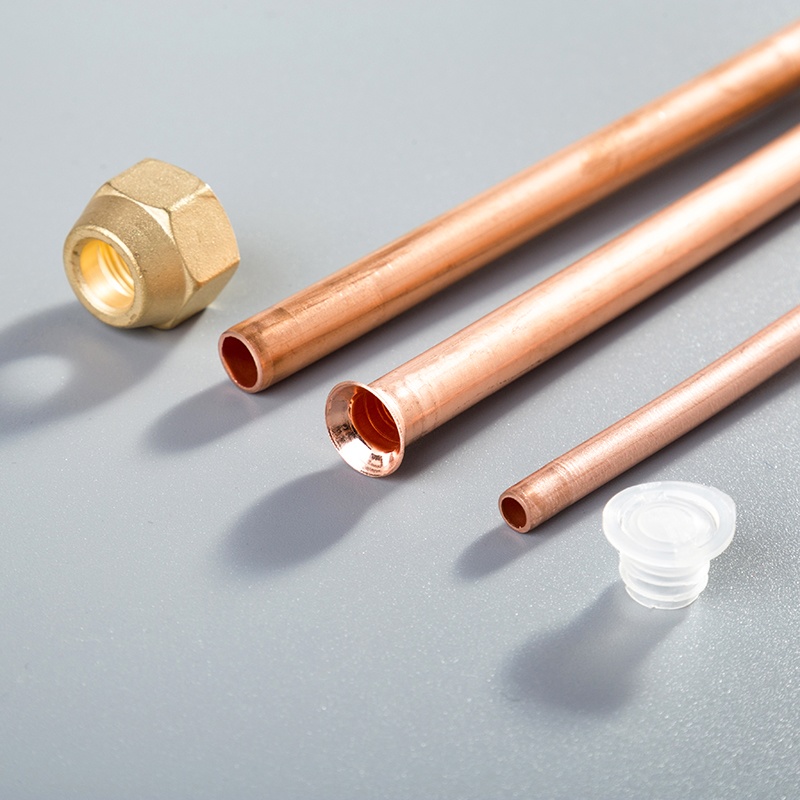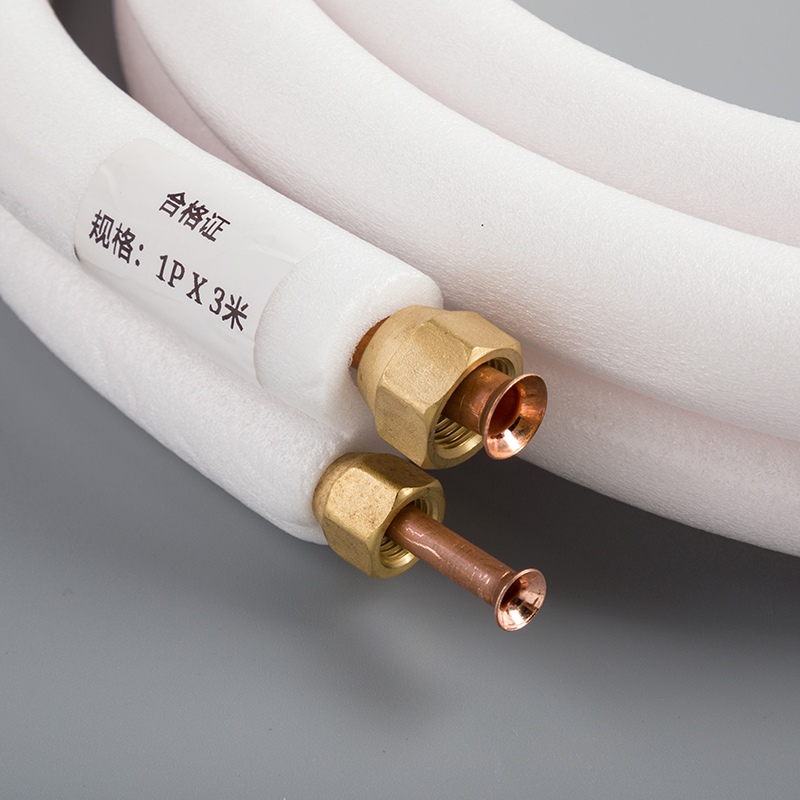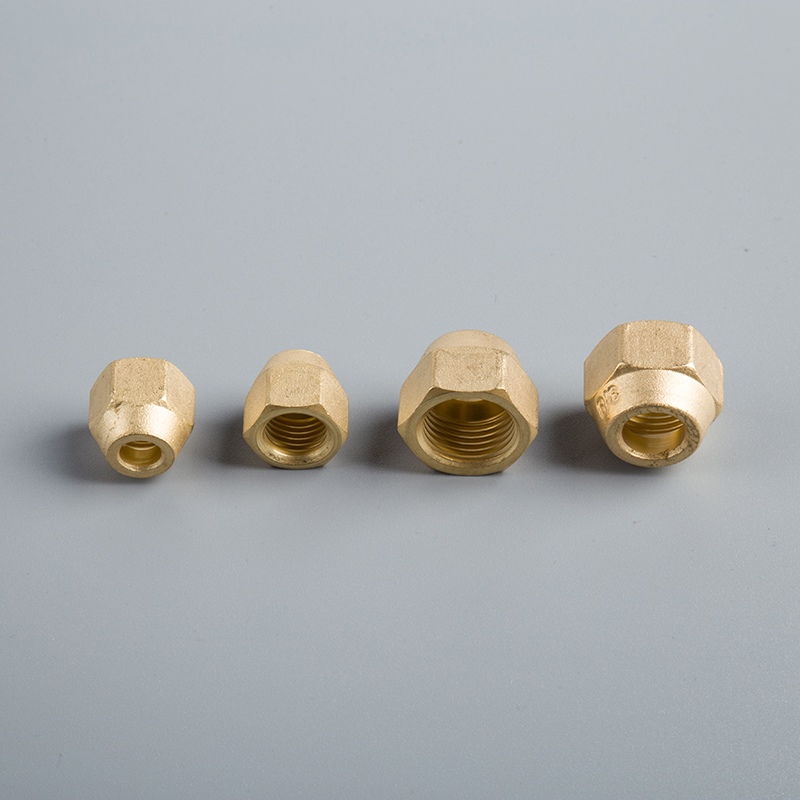Historical Price Trends of Copper Pipes for Air Conditioning

Enhancing the energy efficiency of air conditioning systems, copper pipes play a pivotal role in reducing energy loss and ensuring optimal performance. Their contribution to efficiency, reliability, and overall system performance is undeniable. Understanding the historical price trends of copper pipes is crucial for industry professionals and enthusiasts alike. This blog post aims to delve into the evolution of copper usage in HVAC systems, factors influencing price fluctuations, historical trends analysis, and future outlooks. Stay tuned for an insightful journey through the history of copper pipes for air conditioning.
Historical Overview of Copper Usage in Air Conditioning

Early Uses of Copper in HVAC Systems
Copper piping emerged as a safer alternative to lead pipes after World War II, driven by the increased awareness of lead poisoning dangers. This transition marked a significant shift towards safer and more reliable plumbing materials.
Type L copper pipes found their niche in HVAC systems, especially in refrigerant lines. Their application significantly improved heat transfer efficiency within air conditioning units, enhancing overall system performance.
Evolution of Copper Pipe Manufacturing
The introduction of innovative production techniques revolutionized the manufacturing landscape for copper pipes. These advancements not only streamlined the production process but also enhanced the quality and durability of the final products.
The impact of these advancements extended beyond just quality improvements; they also influenced cost factors associated with copper pipe manufacturing. The evolution in production techniques led to more cost-effective solutions without compromising on performance or reliability.
Factors Influencing Copper Pipe Prices
Raw Material Costs
Mining and Extraction Costs
Raw materials used for Copper Pipes & Tubes manufacturing significantly impact the final pricing.
Factors contributing to the final price of Copper Pipes & Tubes include mining and extraction costs.
Fluctuations in Global Copper Prices
The prices of copper pipes are influenced by global copper price fluctuations.
These fluctuations play a crucial role in determining the overall cost of copper pipe production.
Manufacturing and Processing Costs
Technological Improvements
Technological advancements have a direct impact on manufacturing costs.
Manufacturing costs affecting the final pricing of AC copper pipes per foot are influenced by technological improvements.
Labor and Energy Costs
Labor and energy costs are key components in determining the overall cost of manufacturing copper pipes.
The sourcing of raw materials impacts AC copper pipe prices per kg, considering labor and energy expenses.
Market Demand and Supply Dynamics
Seasonal Variations
Seasonal variations affect market demand, subsequently influencing copper pipe prices.
Understanding seasonal trends is essential for predicting price fluctuations based on demand shifts.
Global Supply Chain Issues
Global supply chain issues can disrupt the availability of raw materials, impacting copper pipe prices.
The complexities within the global supply chain directly influence the pricing dynamics of copper pipes.
Analysis of Historical Price Trends

Price Trends Over the Decades
1970s to 1990s
Copper prices witnessed a steady increase from the 1970s through the 1990s, reflecting the growing demand for this versatile metal.
The rise in copper prices during this period was influenced by various economic factors and technological advancements in air conditioning systems.
2000s to Present
From the early 2000s to the present day, copper prices have experienced fluctuations due to changing global market dynamics.
The modern era has seen a shift in copper pricing influenced by environmental regulations and evolving consumer preferences.
Major Economic Events Impacting Prices
Recessions and Booms
Historical data reveals that copper prices were significantly impacted by economic downturns and periods of growth.
During recessions, copper prices tended to decrease as demand waned, while booms led to price surges driven by increased industrial activities.
Trade Policies and Tariffs
Trade policies and tariffs have played a crucial role in shaping copper prices over time.
Changes in international trade agreements and tariffs have directly affected the cost of copper, impacting its availability and pricing globally.
Future Outlook for Copper Pipe Prices
Predicted Market Trends
Technological Innovations
The integration of advanced technologies in copper pipe manufacturing is expected to drive efficiency and quality enhancements.
Automation and digitalization will streamline production processes, leading to cost savings and improved product consistency.
Smart monitoring systems will revolutionize maintenance practices, ensuring optimal performance and longevity of air conditioning systems.
Environmental Regulations
Stringent environmental regulations are set to influence the production and pricing of copper pipes for air conditioning systems.
Emphasis on sustainable practices will drive innovation towards eco-friendly materials and manufacturing processes.
Compliance with green standards will become a key differentiator, shaping consumer preferences and market trends.
Potential Challenges and Opportunities
Supply Chain Resilience
Building resilient supply chains will be crucial to mitigate disruptions caused by global events like pandemics or geopolitical tensions.
Diversification of sourcing locations and strategic partnerships will enhance supply chain flexibility and reliability.
Implementing agile logistics solutions will ensure timely delivery of raw materials, supporting consistent production schedules.
Alternative Materials and Competition
The emergence of alternative materials poses a competitive challenge to traditional copper pipes in the air conditioning industry.
Innovation in composite materials offers lightweight, durable, and cost-effective alternatives for HVAC applications.
Market players need to adapt by focusing on product differentiation, performance optimization, and value-added services.
Recapping the history of copper pricing reveals a dynamic landscape influenced by various economic and technological factors. Monitoring future price trends is essential for industry professionals to navigate market fluctuations effectively. The impact of these trends on the HVAC industry underscores the need for strategic planning and adaptation to ensure sustainable operations in a competitive environment.
See Also
Revealing the Progression of Copper Pipes in Air Cooling
The Impact of Pure Copper Tubes on Air Cooling
Benefits of Selecting Copper Tubes for Air Cooling
Key Factors in Copper Tubes Transforming Air Cooling
Exploring Future: Developments in Copper Pipe Production for Air Cooling


